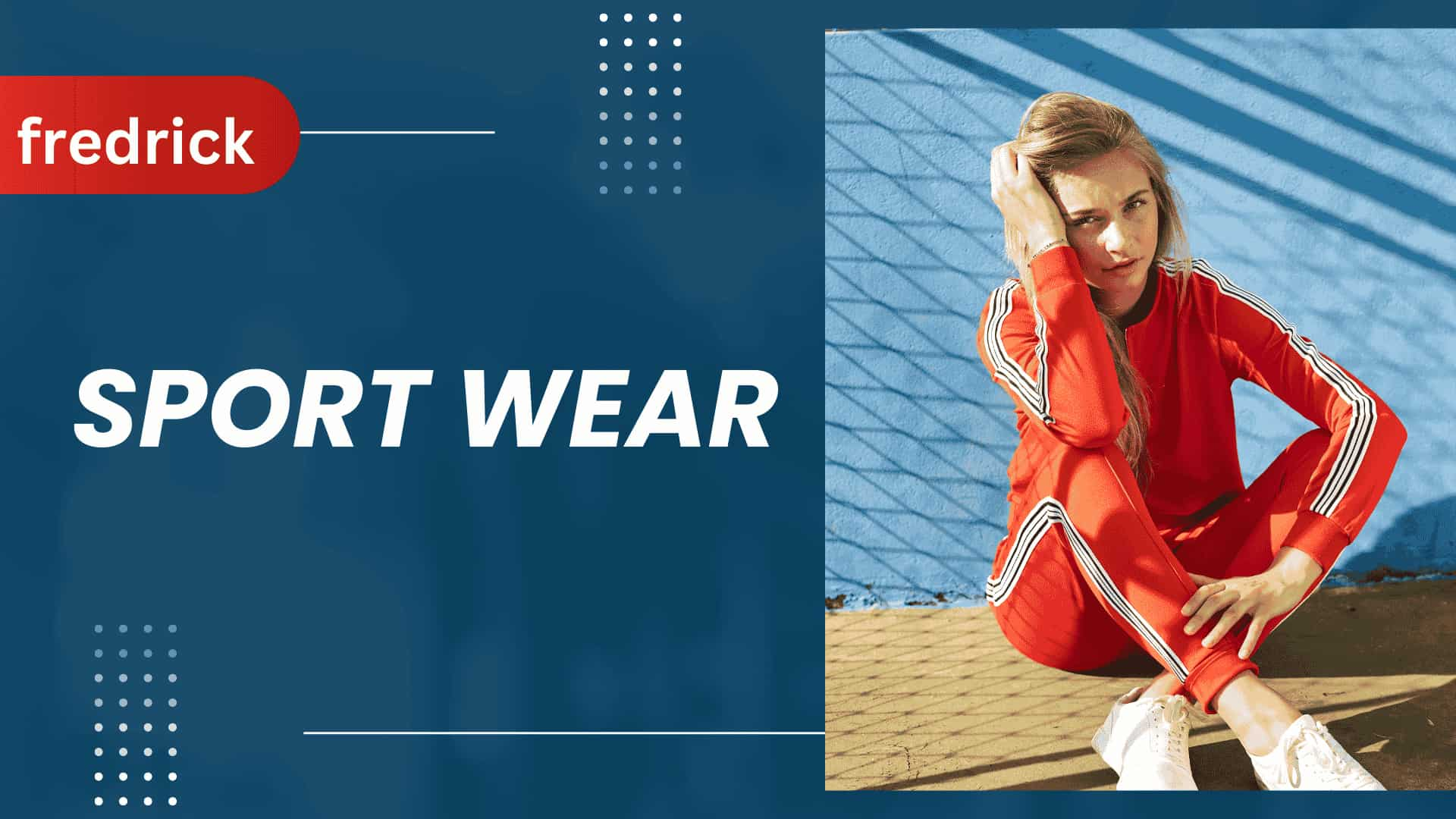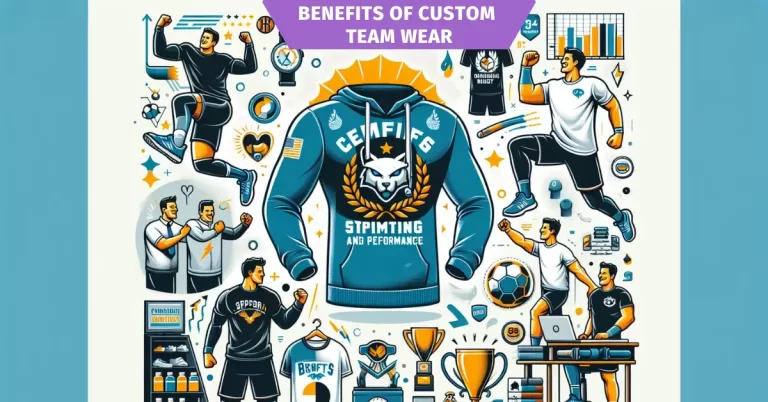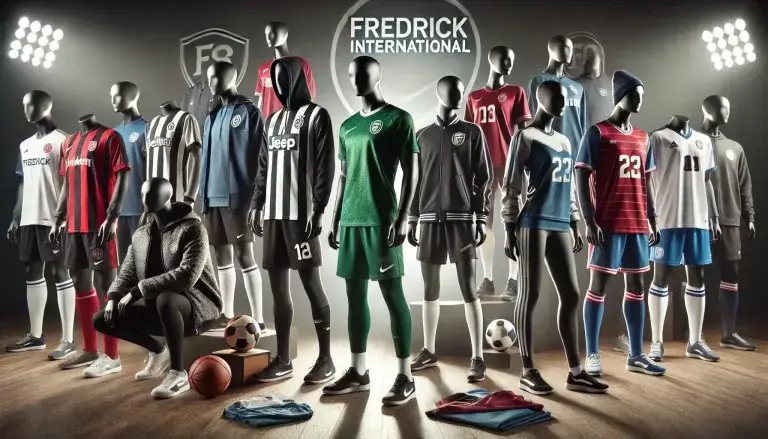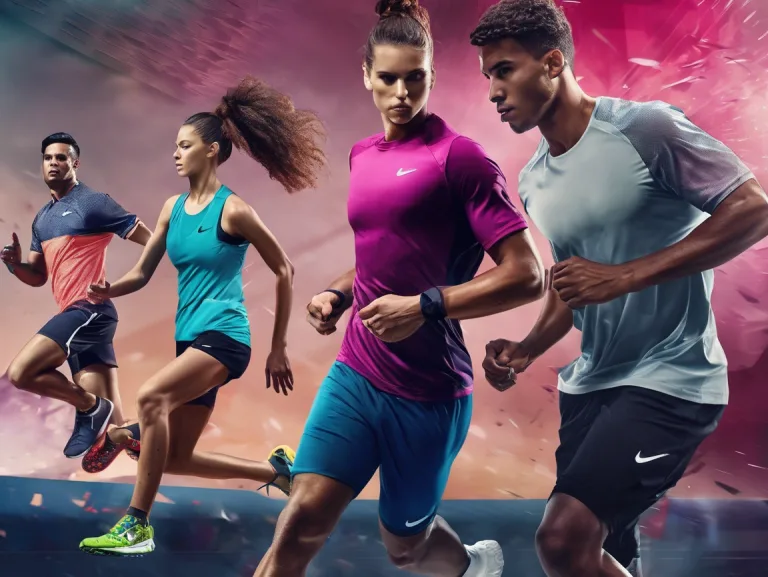Sports Prep Wear: Unlock Peak Performance and Solve Common
Struggling to find the right sports prep wear? You’re not alone. Whether you need gear for comfort, performance, or injury prevention, the right clothing can make all the difference. Discover expert insights and practical tips to choose sportswear that works as hard as you do—so you can focus on your game, not your gear.
Sports Prep Wear
Sports prep wear isn’t just about looking the part—it’s about optimizing your performance from warm-up to cool-down. It refers to specialized athletic clothing designed to support your body, improve comfort, and enhance how you move during training or competition.
At its core, the right prep wear works behind the scenes. It regulates body temperature, wicks away sweat, and offers targeted support where you need it most. Whether you’re sprinting on the track or lifting heavy in the gym, quality gear can make the difference between a sluggish session and a personal best.
Key Functions of Sports Prep Wear:
- Temperature Control: Keeps you cool when it’s hot and warm when it’s cold.
- Moisture Management: Pulls sweat away from the skin to prevent chafing and irritation.
- Muscle Support: Compression fabrics reduce muscle vibration and aid faster recovery.
- Mobility: Flexible materials allow for a full range of motion during intense activities.
Why It’s Essential for Every Athlete
Athletes at every level—whether you’re a weekend warrior or a seasoned pro—benefit from gear designed with performance in mind. The right sports prep wear isn’t just about comfort; it directly affects how well you train, recover, and compete.
Here’s why it matters:
✅ Boosts Performance – High-quality sportswear improves blood circulation, reduces muscle fatigue, and enhances endurance. Studies show that compression gear can improve blood flow by up to 40%, meaning you recover faster and stay stronger for longer.
✅ Reduces Injury Risk – Supportive designs help stabilize muscles and joints, lowering the chance of strains and sprains. Wearing proper compression garments has been linked to a 30% decrease in muscle soreness after workouts.
✅ Increases Confidence – Let’s face it—when you look good, you feel good. Wearing well-fitted, stylish prep wear enhances your self-assurance, giving you one less thing to worry about during performance.
| Benefit | Why It Matters |
|---|---|
| Performance Boost | Improves endurance and muscle recovery |
| Injury Prevention | Supports joints and reduces muscle strain |
| Comfort & Confidence | Enhances mobility while boosting self-esteem |
When you invest in the right sports prep wear, you’re investing in yourself—your comfort, your performance, and your long-term health. Don’t let the wrong gear hold you back when the right fit could push you forward.
How to Choose the Right Sports Prep Wear for Your Needs
The right sports prep wear isn’t just about style—it’s about enhancing your performance while keeping you comfortable. Whether you’re chasing a personal record or powering through a tough practice, the right gear can make all the difference. Here’s how to choose sportswear that works as hard as you do.
Prioritize Comfort and Performance
If your gear isn’t comfortable, you’ll feel it—and not in a good way. Sports prep wear should move with you, not against you. Prioritize fabrics and designs that support your performance while keeping you comfortable from warm-up to cool-down.
What to Look For:
- ✅ Breathable, Moisture-Wicking Fabrics: These keep sweat in check by pulling moisture away from your skin, reducing chafing and irritation. Materials like polyester blends and merino wool excel here.
- ✅ Compression Gear: Compression clothing helps reduce muscle fatigue, speeds up recovery, and can even improve blood circulation. Research shows it may reduce post-exercise soreness by 20-30%.
- ✅ Flexible Materials: Stretchy fabrics (like spandex or elastane) allow a full range of motion, which is essential for activities that demand agility and quick movements.
| Feature | Why It Matters |
|---|---|
| Moisture-Wicking | Keeps you dry and prevents chafing |
| Compression | Supports muscles and speeds up recovery |
| Stretch & Flexibility | Ensures freedom of movement in every direction |
Match Gear to Your Sport
Not all sportswear is created equal. The right prep wear depends on your activity—because running a marathon isn’t the same as lifting heavy in the gym.
Find What Fits Your Game:
- Running: Lightweight, breathable materials that wick away sweat are essential. Look for seamless designs to prevent skin irritation during long distances.
- Gym Workouts: Compression gear provides muscle support and helps with blood flow during weightlifting and high-intensity training.
- Team Sports: Durability and flexibility are key. Look for reinforced seams and fabrics that allow quick, multi-directional movement.
Weather matters too. In warm climates, go for lightweight, sweat-wicking layers. For colder environments, thermal and moisture-regulating fabrics will keep you warm without overheating.
| Sport | Ideal Prep Wear |
|---|---|
| Running | Lightweight, breathable, moisture-wicking |
| Gym Workouts | Compression gear for muscle support |
| Team Sports | Flexible, durable fabrics for tough movement |
| Cold Weather | Insulated, sweat-resistant thermal layers |
| Hot Weather | Lightweight, UV-protective, quick-dry fabric |
Fit Matters—Here’s Why
A poor fit isn’t just uncomfortable—it can hold you back. Too loose, and you risk chafing. Too tight, and your range of motion suffers. Finding the right size ensures your sports prep wear enhances your performance instead of restricting it.
Tips for Finding the Perfect Fit:
- 📏 Measure Twice, Buy Once: Use a measuring tape to check your chest, waist, hips, and inseam. Compare with brand-specific size charts—sizes can vary widely.
- 🧘 Move-Test Your Gear: Your prep wear should feel snug but not restrictive. Test it by stretching or doing a few squats to check for comfort and flexibility.
- ❌ Avoid Common Mistakes: Don’t size down for compression—it should support without cutting off circulation. Also, avoid sizing up too much, as baggy gear can lead to friction burns during repetitive movements.
| Fit Issue | Impact on Performance |
|---|---|
| Too Tight | Limits mobility, causes discomfort |
| Too Loose | Increases chafing, reduces muscle support |
| Just Right | Enhances movement, supports muscles, and fits well |
Your gear should work with your body—not against it. With the right fit and sport-specific design, your sports prep wear becomes more than just clothing—it’s your secret weapon for better performance.
Common Problems with Sports Prep Wear
Even the best sports prep wear can cause frustration if it doesn’t perform as expected. Whether it’s feeling overheated mid-workout or dealing with worn-out gear too soon, these problems are common—but fixable. Here’s how to solve the most frequent issues and keep your athletic wear working for you.
Overheating and Sweat Buildup
The Problem:
You’re pushing your limits, but your gear isn’t keeping up. Excessive sweat and trapped heat can lead to discomfort, skin irritation, and even performance dips.
Why It Happens:
- Poor-quality fabrics trap heat and moisture.
- Lack of ventilation in key areas (like underarms and back).
- Wearing heavy materials not suited for intense activity or warm weather.
The Fix:
Choose Moisture-Wicking, Quick-Dry Materials
Look for fabrics designed to pull moisture away from your skin. Polyester blends, merino wool, and modern synthetic fibers are great at regulating body temperature.
Prioritize Breathable Designs
Seek out gear with mesh panels or laser-cut ventilation zones—especially for high-sweat areas. This small feature can make a big difference.
Layer Smart
In cooler climates, opt for a moisture-wicking base layer to keep sweat off your skin, and add breathable outer layers for warmth without overheating.
| Material | Function |
|---|---|
| Polyester Blends | Lightweight and moisture-wicking |
| Merino Wool | Regulates temperature and absorbs odor |
| Nylon | Quick-drying and durable |
Poor Fit and Discomfort
The Problem:
Your sports prep wear either feels too tight and restrictive or too loose and distracting, impacting your movement and overall comfort.
Why It Happens:
- Inconsistent sizing across brands.
- Failing to measure accurately before purchasing.
- Assuming “compression” means sizing down.
The Fix:
Measure Yourself Correctly
Always check your measurements (chest, waist, hips, and inseam) and compare them to the brand’s size chart. Sizes can vary significantly from one manufacturer to another.
Understand Compression vs. Regular Fit
Compression gear should feel snug—but not cut off circulation. Regular athletic wear should allow for natural movement without sagging or bunching.
Test for Range of Motion
When trying on gear, move around. Perform a few stretches or squats to check if the clothing moves with you without pulling or pinching.
Pro Tip: Some brands offer “tall,” “petite,” or “plus” sizing for a more customized fit—don’t settle for standard if it’s not working.
| Fit Type | Best For |
|---|---|
| Compression Fit | Muscle support and faster recovery |
| Relaxed Fit | Casual training and comfort-focused wear |
| Athletic Fit | Balanced support and freedom of movement |
Gear Wearing Out Too Quickly
The Problem:
Your sportswear looks great out of the package but starts to stretch, fade, or lose shape after just a few washes.
Why It Happens:
- Washing in hot water or using harsh detergents.
- Skipping care instructions on the label.
- Overuse without proper maintenance.
The Fix:
✅ Follow Proper Care Instructions
Always check the label. Most performance fabrics should be washed in cold water and air-dried to prevent breakdown.
✅ Use Gentle Detergents
Opt for mild, sportswear-specific detergents that preserve elasticity and wick-away coatings. Avoid fabric softeners—they can clog moisture-wicking fibers.
✅ Rotate Your Gear
Give your sports prep wear time to rest. Rotating between multiple pieces reduces wear and tear on any single item.
Care Checklist for Longer-Lasting Gear:
- Wash in cold water on a gentle cycle.
- Air dry instead of using a high-heat dryer.
- Avoid bleach and fabric softeners.
- Store in a cool, dry place.
| Care Mistake | Impact |
|---|---|
| Hot Water Washes | Weakens fibers, causing shrinkage |
| Tumble Drying on High | Damages elasticity and shape |
| Skipping Rotation | Faster wear and tear on key pieces |
When your gear works, you work better. By choosing the right materials, nailing the perfect fit, and maintaining your sports prep wear, you can extend its lifespan and stay focused on what really matters—your performance.
Fabric Technology That Works for You
The best sports prep wear starts with advanced fabric technology—because no one wants to deal with sweat buildup, lingering odors, or stiff, restrictive materials. The right fabrics enhance your performance by keeping you dry, fresh, and flexible.
Key Fabric Features to Prioritize:
- ✅ Moisture-Wicking Materials – Look for fabrics like polyester blends or nylon that pull sweat away from your skin. This keeps you dry and reduces chafing, especially during high-intensity workouts.
- ✅ Antimicrobial Properties – Some athletic gear is treated with antimicrobial finishes to prevent odor-causing bacteria from thriving. This is especially useful for athletes who train regularly or engage in long sessions.
- ✅ Four-Way Stretch – Fabrics with multidirectional stretch (like spandex or elastane) provide unrestricted movement and bounce back to their original shape, even after intense activity.
| Fabric Technology | Benefit |
|---|---|
| Moisture-Wicking | Keeps you dry and prevents irritation |
| Antimicrobial Treatment | Reduces odor and bacteria buildup |
| Four-Way Stretch | Allows full mobility and better flexibility |
| UV Protection | Shields skin from harmful sun exposure |
🎯 Design That Supports Your Performance
Great design goes beyond appearance—it’s about functionality. The best sportswear complements your natural movements, reduces friction, and withstands the rigors of your training.
- ✅ Reinforced Seams – High-stress areas like the knees, elbows, and underarms need double-stitched or flatlock seams to prevent tearing and extend durability.
- ✅ Ergonomic Fits – Sportswear designed with the body’s movement in mind provides a snug but flexible fit, reducing fabric bunching and improving performance.
- ✅ Seamless Construction – Seamless designs minimize skin irritation, especially for endurance sports like running or cycling. Fewer seams mean less chafing.
🌈 Versatility and Style
Modern athletes want sportswear that fits their lifestyle—both in the gym and beyond. The best prep wear isn’t just functional; it’s also stylish and adaptable.
- ✅ Transitional Pieces – Choose gear that works for both training sessions and casual wear. For example, sleek joggers and compression leggings can double as streetwear.
- ✅ Neutral Color Palettes – Black, gray, are not only versatile but also hide sweat stains and wear better over time.
- ✅ Layer-Friendly Designs – Look for sportswear that’s easy to layer, making it adaptable for varied weather conditions or changes in intensity.
When choosing sports prep wear, don’t settle for less. Seek out gear that combines innovative fabric technology, supportive design, and versatile style—because you deserve the best!
Expert Tips for Getting the Most Out of Your Sports Prep Wear
Investing in high-quality sports prep wear is only half the battle—how you use and care for it determines its long-term performance. Whether you’re braving cold mornings or pushing through summer heat, these expert tips will help you maximize your gear’s comfort, durability, and effectiveness.
Layering Techniques for All Seasons
Mastering the art of layering is crucial when your training routine spans different climates. The right layers provide temperature control without restricting movement.
How to Layer Smart:
✅ Base Layer (Moisture Management)
Start with a moisture-wicking base layer to pull sweat away from your skin. Look for lightweight materials like polyester or merino wool for year-round comfort.
✅ Mid Layer (Insulation)
For cooler weather, add a mid-layer made from fleece or insulated fabric. This traps body heat while remaining breathable—ideal for outdoor training.
✅ Outer Layer (Protection)
Top it off with a wind- or water-resistant jacket if you’re training in rain, snow, or wind. Choose lightweight shells that block the elements without adding bulk.
Pro Tip: In warm weather, skip the mid-layer and opt for ventilated designs to prevent overheating.
| Layer | Function | Best Materials |
|---|---|---|
| Base Layer | Wicks moisture, keeps skin dry | Polyester, Merino wool |
| Mid Layer | Provides warmth and insulation | Fleece, down, synthetic blends |
| Outer Layer | Shields from wind and rain | Nylon, Gore-Tex, softshell |
Maintaining and Cleaning Your Gear
Proper care extends the life of your sports prep wear—no one wants gear that fades, stretches, or loses its edge after a few washes.
Best Practices for Long-Lasting Sportswear:
✅ Follow the Label
Always check care instructions—some fabrics require cold water washes or air drying to maintain their performance properties.
✅ Use Gentle Detergents
Harsh chemicals and fabric softeners can break down elastic fibers and moisture-wicking coatings. Stick to mild, sportswear-specific detergents.
✅ Wash Smart
- Turn clothes inside out to reduce pilling and fading.
- Use a gentle cycle to preserve elasticity.
- Air dry instead of using high-heat dryers, which can damage stretch materials.
✅ Dealing with Odor
For stubborn smells, soak your gear in a vinegar and water solution (1:4 ratio) before washing. This naturally breaks down sweat and bacteria buildup.
| Do This | Avoid This |
|---|---|
| Use cold water and gentle cycles | Hot water or heavy-duty wash settings |
| Air dry whenever possible | High-heat dryers (weakens fibers) |
| Wash after every intense workout | Letting sweat-soaked gear sit unwashed |
When to Replace Your Sports Prep Wear
Even the best-maintained gear doesn’t last forever. Knowing when to retire and replace your sportswear ensures you always train in optimal comfort and support.
Signs It’s Time to Upgrade:
✅ Loss of Compression – If your compression tights or shirts feel loose, they’re no longer offering muscle support.
✅ Visible Wear and Tear – Frayed seams, pilling fabric, and stretched-out waistbands are clear signs your gear is past its prime.
✅ Persistent Odor – If a lingering smell remains despite proper washing, the antimicrobial coating has likely worn off.
✅ Reduced Performance – When moisture-wicking no longer works or fabric feels rough against your skin, it’s time to refresh your wardrobe.
When to Replace Common Sportswear Items:
| Item | Lifespan | Replacement Sign |
|---|---|---|
| Compression Gear | 6-12 months (with regular use) | Loss of elasticity, sagging |
| Running Shoes | Every 300-500 miles | Worn soles, lack of cushioning |
| Sports Bras | 8-12 months | Loose bands, reduced support |
| Leggings & Shorts | 12-18 months | Stretch loss, thinning fabric |
Takeaway: By layering wisely, caring for your gear properly, and knowing when to upgrade, you ensure your sports prep wear supports every rep, sprint, and stretch. Because when your gear works with you—not against you—nothing stands between you and your best performance.
What is Sports Prep?
Sports prep refers to the physical, mental, and gear-related preparation athletes do before physical activity. It includes warm-ups, mental focus, and wearing specialized sportswear for better performance and injury prevention.
What is the Famous Sportswear Brand?
Nike, Adidas, and Under Armour are some of the most famous sportswear brands, known for delivering high-performance gear combining comfort, innovation, and style.
What is Prep Wear?
Prep wear is sports-specific clothing designed to enhance performance, comfort, and protection. It includes moisture-wicking fabrics, compression gear, and weather-appropriate layers for various athletic activities.
Does PrEP Protect Tops?
PrEP (pre-exposure prophylaxis) is a medication that protects against HIV transmission regardless of sexual position, including tops, by preventing the virus from establishing infection.
How Many Days to PrEP?
PrEP typically takes about 7 days to reach maximum protection for receptive anal sex and 21 days for vaginal sex when taken daily as prescribed.







